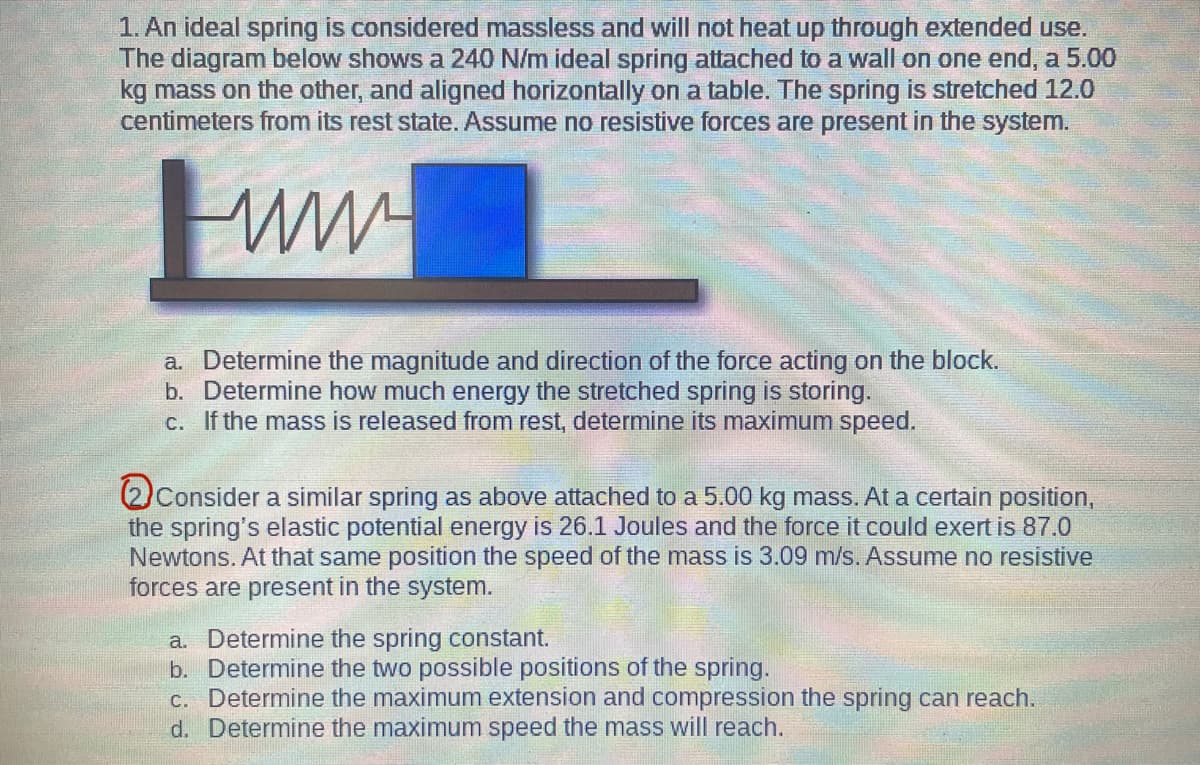(2)Consider a similar spring as above attached to a 5.00 kg mass. At a certain position, the spring's elastic potential energy is 26.1 Joules and the force it could exert is 87.0 Newtons. At that same position the speed of the mass is 3.09 m/s. Assume no resistive forces are present in the system. a. Determine the spring constant. b. Determine the two possible positions of the spring. c. Determine the maximum extension and compression the spring can reach. d. Determine the maximum speed the mass will reach.
Simple harmonic motion
Simple harmonic motion is a type of periodic motion in which an object undergoes oscillatory motion. The restoring force exerted by the object exhibiting SHM is proportional to the displacement from the equilibrium position. The force is directed towards the mean position. We see many examples of SHM around us, common ones are the motion of a pendulum, spring and vibration of strings in musical instruments, and so on.
Simple Pendulum
A simple pendulum comprises a heavy mass (called bob) attached to one end of the weightless and flexible string.
Oscillation
In Physics, oscillation means a repetitive motion that happens in a variation with respect to time. There is usually a central value, where the object would be at rest. Additionally, there are two or more positions between which the repetitive motion takes place. In mathematics, oscillations can also be described as vibrations. The most common examples of oscillation that is seen in daily lives include the alternating current (AC) or the motion of a moving pendulum.

Trending now
This is a popular solution!
Step by step
Solved in 3 steps with 3 images









